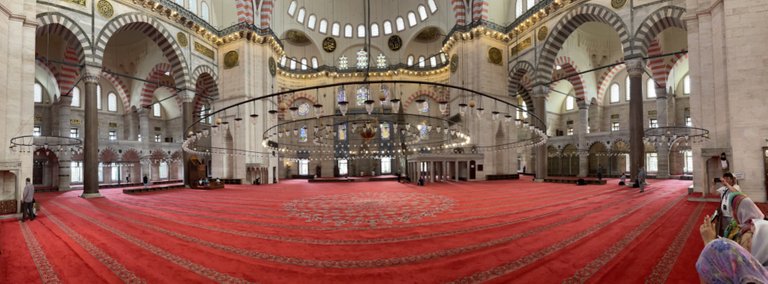Suleymaniye Mosque was built in 1557 on one of the seven beautiful hills of Istanbul for Kanuni Sultan Suleyman (the Magnificent) by Mimar Sinan (the architect). It was built in seven years (1550-1557). In its building complex there are medreses, a hospital, a hospice and a Turkish bath. The magnificent Süleymaniye, considered the largest mosque in Istanbul, was built on an area of almost 63,000 m². The building impresses with its simple construction, its acoustics, its colorful glass windows, its very valuable granite columns, its soot room, its sadirvan (water tank with fountain), its four minarets and its ten serefe (minaret balconies). Its interior area is 3,422 m2. The diameter of the dome is 27.25 meters and the height of the dome is 48.5 meters. The construction cost of the mosque was 59,760,180 Akze (700,000 gold ducats), and 3523 craftsmen worked on its construction. The foundation stone was laid by Seyhulislam Ebussuud Efendi and the door was first opened for prayer by Mimar Sinan.
The magnificent temple was damaged by fire in 1660 and then restored. During the reign of Sultan Abdülmecid (1839-1860) all the columns were covered with cement and oil paint. In 1956, the paints were scraped off and the minarets, dome and vaults were restored. The founder of the mosque, Kanuni Sultan Süleyman, was buried in the cemetery in front of the mosque. The tomb of Mimar Sinan is located outside the garden on the northeast side of the mosque.
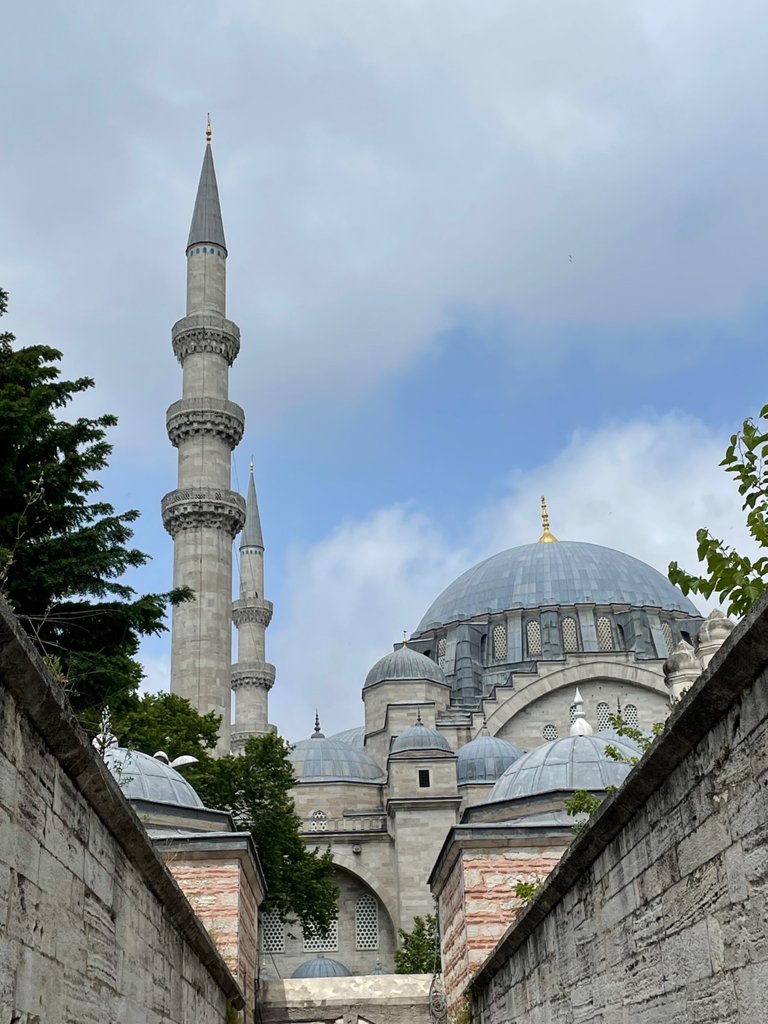
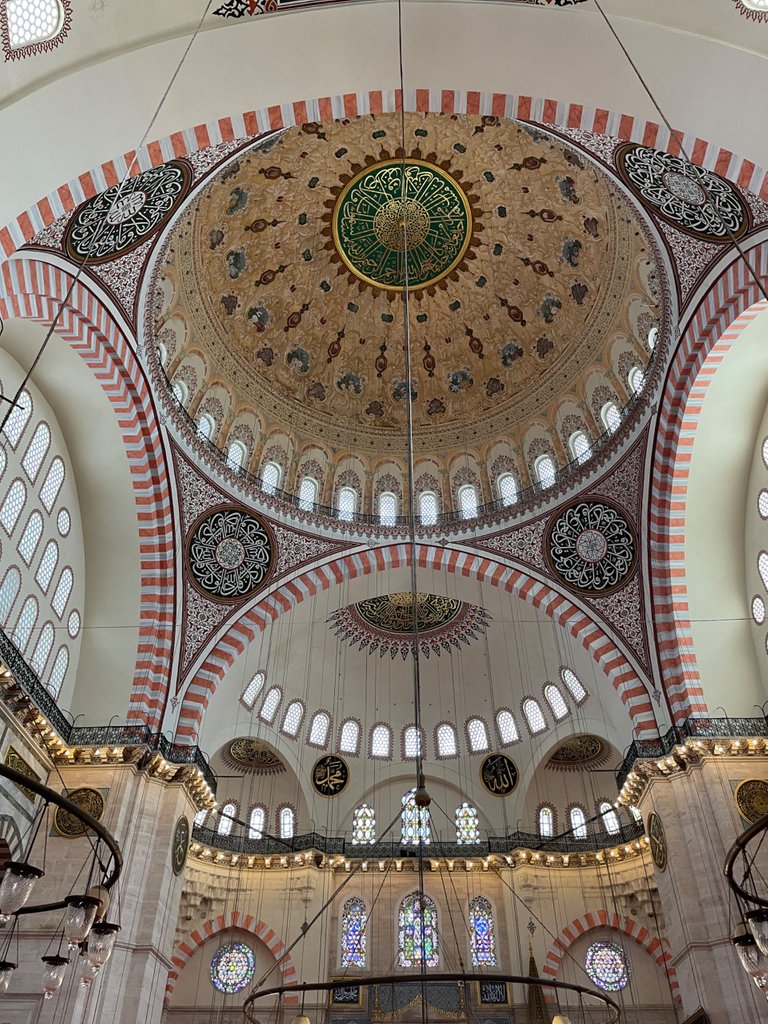
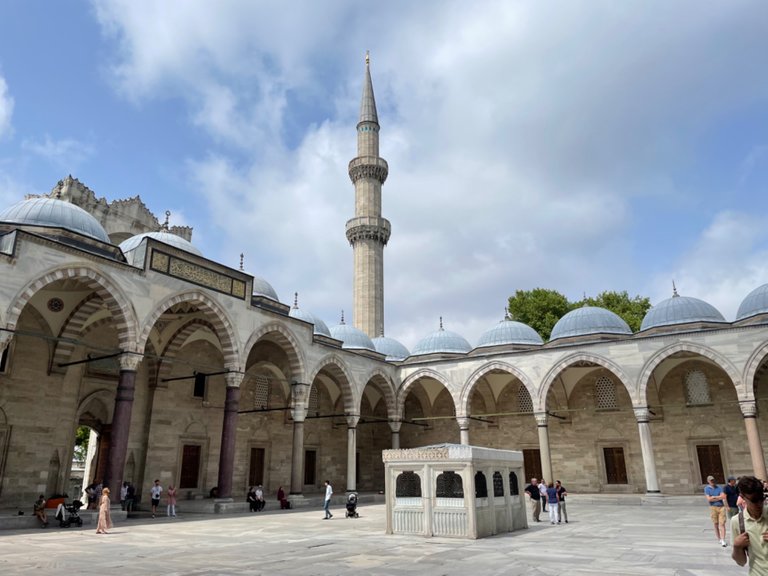
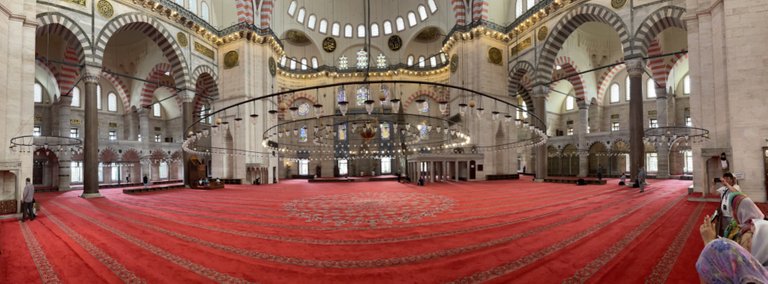
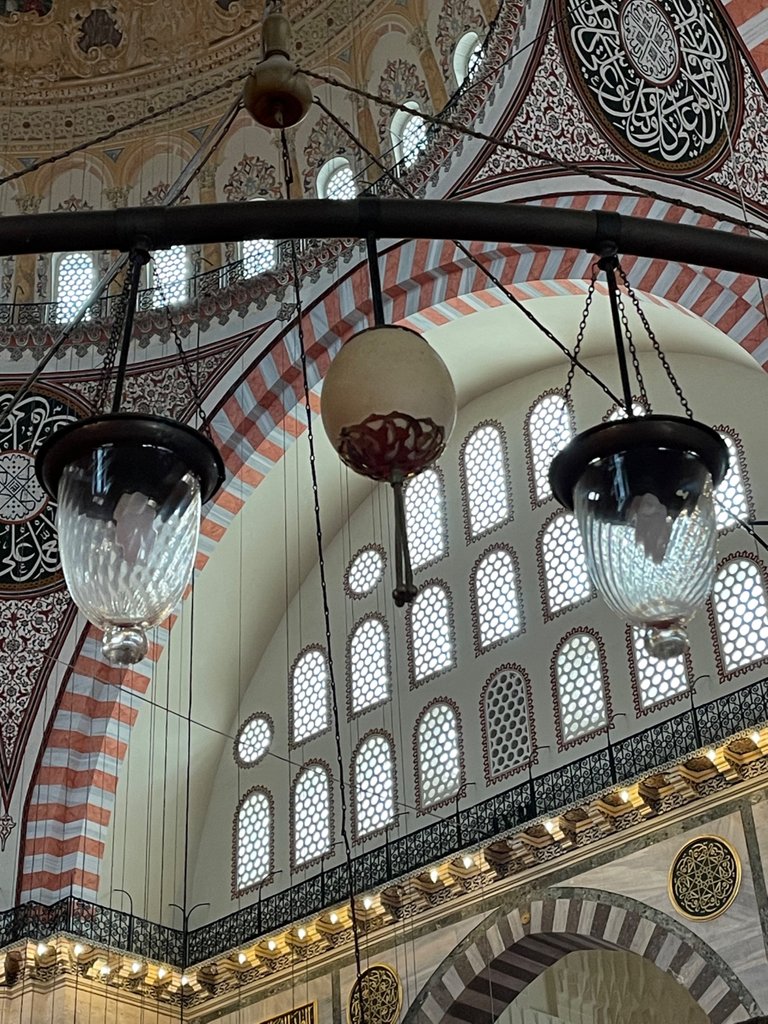
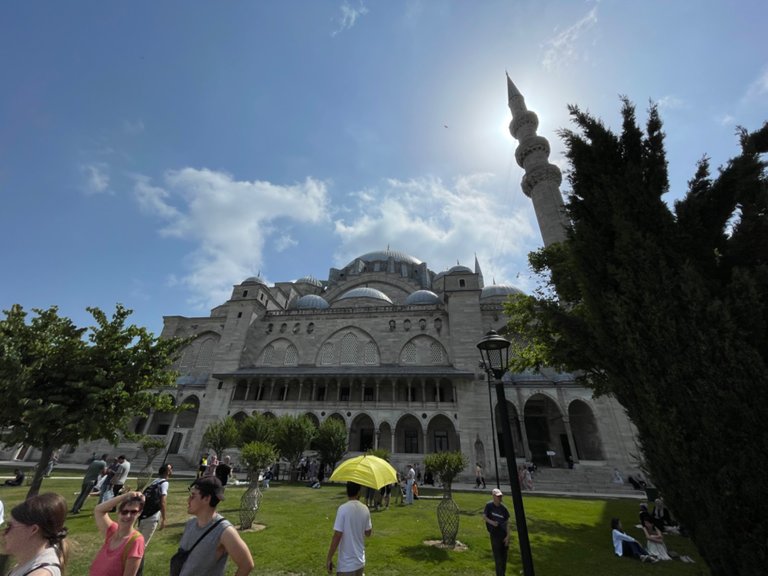
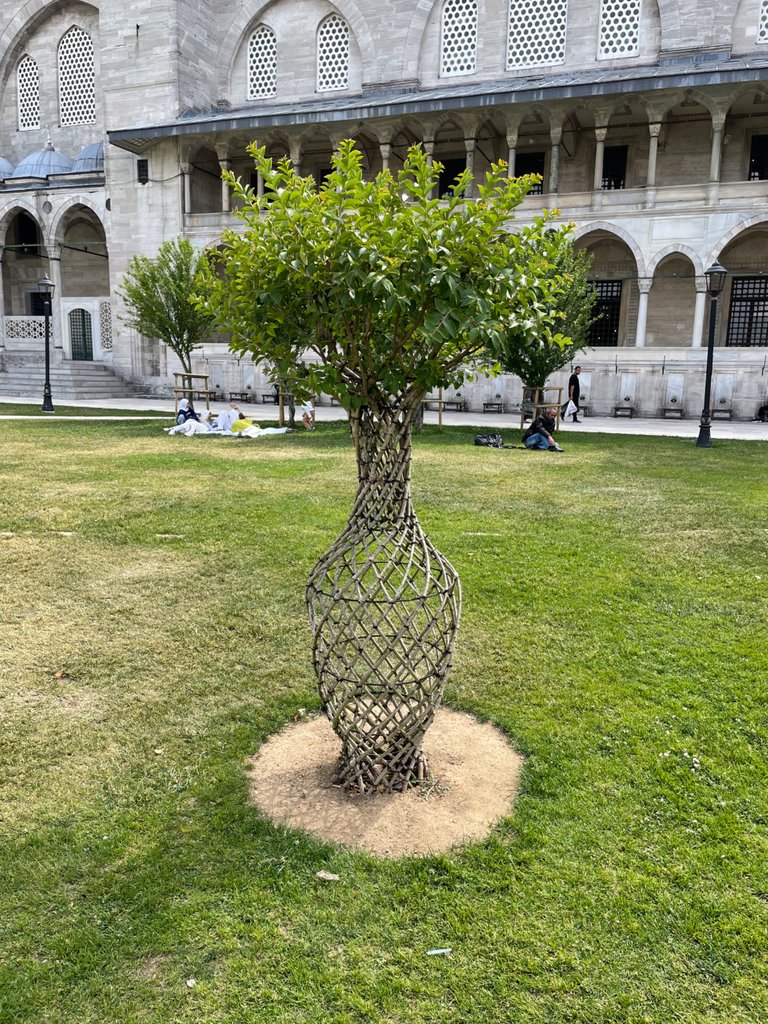
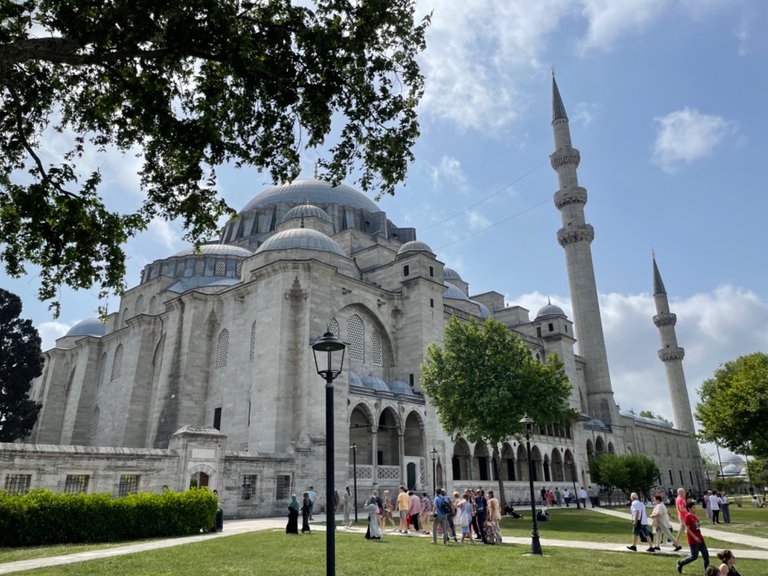
Die Süleymaniye-Moschee wurde 1557 auf einem der sieben schönen Hügel Istanbuls für Kanuni Sultan Süleyman (den Prächtigen) von Mimar Sinan (dem Architekten) errichtet. Sie wurde in sieben Jahren (1550-1557) erbaut. In ihrem Gebäudekomplex befinden sich Medresen, ein Krankenhaus, ein Hospiz und ein türkisches Bad. Die prächtige Süleymaniye, die als die größte Moschee Istanbuls gilt, wurde auf einer Fläche von fast 63.000 m² erbaut. Das Gebäude besticht durch seine einfache Bauweise, seine Akustik, seine farbenfrohen Glasfenster, seine sehr wertvollen Granitsäulen, seinen Rußraum, seinen Sadirvan (Wassertank mit Springbrunnen), seine vier Minarette und seine zehn Serefe (Minarettbalkone). Seine Innenfläche beträgt 3.422 m2. Der Durchmesser der Kuppel beträgt 27,25 m und die Höhe der Kuppel 48,5 m. Die Baukosten für die Moschee beliefen sich auf 59.760.180 Akze (700.000 Golddukaten), und 3523 Handwerker arbeiteten an ihrem Bau. Der Grundstein wurde von Seyhulislam Ebussuud Efendi gelegt und die Tür wurde erstmalig von Mimar Sinan zum Gebet geöffnet.
Der prächtige Tempel wurde 1660 durch einen Brand beschädigt und dann restauriert. Während der Herrschaft von Sultan Abdülmecid (1839-1860) wurden alle Säulen mit Zement und Ölfarbe überzogen. 1956 wurden die Anstriche abgekratzt und die Minarette, die Kuppel und die Gewölbe restauriert. Der Gründer der Moschee, Kanuni Sultan Süleyman, wurde auf dem Friedhof vor der Moschee begraben. Das Grabmal von Mimar Sinan befindet sich außerhalb des Gartens an der Nordostseite der Moschee.
